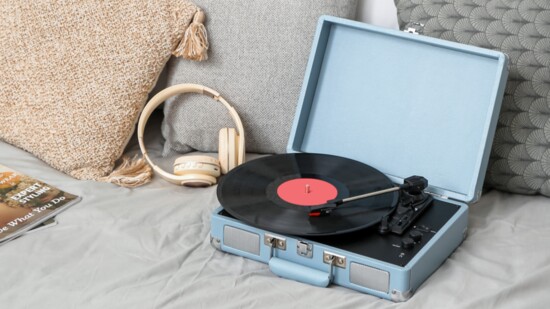What’s hot for tween and teen bedrooms? How can you create a productive homework space? Which storage solutions are best? What’s the correlation between child psychology and interior design?
Valley design experts dish the answers.
Here’s what’s trending when it comes to tween/teen bedrooms.
Bohemian Vibes: Think colorful textiles, macrame wall hangings, and layered rugs. Incorporate eclectic patterns and textures for a cozy atmosphere. Plants, rattan furniture, and string lights add to the vibe, creating a free-spirited space.
Minimalist Design: Minimalism is popular for those who prefer clean lines and clutter-free spaces. Opt for sleek, simple furniture and neutral color palettes. Keep decor and accessories to a minimum, focusing on functionality. Utilize storage solutions like built-in closets and under-bed drawers for an organized, streamlined look.
Vintage Revival: Nostalgic elements like vinyl records, vintage posters, and mid-century modern furniture are totally trending. Mix and match different eras. Thrift store finds and DIY projects add character, allowing teens to express their individuality.
Tech Integration: Tweens/teens often seek spaces that seamlessly integrate innovative features. Consider incorporating smart home devices like voice-controlled speakers, smart lighting systems, and wireless charging pads. Create designated tech zones with built-in outlets and cable management solutions for gaming consoles.
Personalization: Allow tweens/teens to express their interests and hobbies through decor align with their favorite things, like athletes or bands. Display customized wall decals, artwork, and photos.
Meg Behrens, Founder/Lead Designer, Meg Behrens Design
The key to creating dedicated homework space for kids involves balancing aesthetic appeal with practical functionality.
Space Planning: Start by evaluating the available space and determining the best layout for the homework area, considering natural light, traffic flow, and proximity to distractions. Arrange furniture to allow efficient movement ensuring kids can access their supplies.
Ergonomic Design: Focus on comfort and ergonomics when choosing furniture. Select a desk and chair that are adjustable to fit your child’s growing height and posture. Ensure the desk surface is large enough for study materials and electronic devices.
Storage Solutions: Incorporate storage solutions to keep supplies organized and accessible with shelves, cubbies, and drawers. Maximize vertical space with wall-mounted organizers or floating shelves and have dedicated spots for each item.
Lighting Design: Illuminate the study area with a combination of ambient, task, and accent lighting to create a well-lit and inviting atmosphere. Maximize natural light by positioning the desk near windows. Supplement with desk lamps or adjustable spotlights for adequate illumination.
Personalization: Add elements that reflect your child’s personality and interests creating a sense of ownership and pride in their study area, such as decorative accents and artwork.
Colleen Langdon, Founder/Principal Designer, Crafted Quarters
craftedquarters.com
To seamlessly transition a younger child’s room to a tween/teen room, avoid overly specific patterns or themes early on. For example, if you want an ocean theme for a kid’s space, you can still get the same effect by picking a more neutral blue wall paint or classic blue striped wallpaper. You can add the room “theme” through art, bedding, and accessories- all easy to swap when your kids want something new.
From an interior design perspective, kids and pets in the home require more care when it comes to sourcing fabrics and furniture. As an interior designer, we’re all about details even asking the animal’s fur color because if you have a black cat, you might not want a light sofa. We use stain and soil resistant fabrics in households with kids.
We always review the budget and comfort zone for spending on kids' furniture. Most of the time, kids grow out of things quickly so parents shouldn’t invest too much into a kid’s space. There are select core pieces, however, that should last for years, but smaller accent pieces shouldn’t break the bank.
Shelby Knoles, Owner/Principal Designer, P. Emerson Interiors
My journey into interior design was shaped by a rich background in child psychology and luxury childcare. Today, as a foster mom and adoptive mom of two, I'm passionate about designing environments that support children's wellbeing.
Based on child psychology research, our “five senses” approach to interior design can have a profound impact on a child's development and mental health.
Sight: Research shows that colors, artwork, and lighting can influence a child's mood and cognitive development. Soft, soothing hues promote relaxation, while vibrant colors stimulate creativity and play.
Sound: According to studies, soft background music or natural sounds create a calming atmosphere, while noise-dampening materials like rugs and curtains help create a peaceful environment. Encouraging children to explore music enhances their auditory experiences.
Touch: Tactile experiences are essential for young children's development. Soft bedding, textured surfaces, and interactive play mats stimulate sensory exploration and fine motor skills.
Smell: Pleasant scents, like lavender or chamomile, have a calming effect on children, contributing to better sleep and overall wellbeing. Access to fresh air is also important.
Taste: Creating inviting dining areas encourages positive mealtime experiences, supporting healthy eating habits and family bonding.
Mackenzie Collier, Founder, Mackenzie Collier Interiors
